Located in southeastern Montana, roughly 60 miles east of Billings, Little Bighorn Battlefield National Monument preserves the land where the most iconic battle of the American West was fought. Perhaps because of the romanticized image of the American West, the Battle of Little Bighorn remains one of the best known moments in American military history. Yet it’s unique, in that it’s famous for being one of our greatest defeats. Standing on the golden hills overlooking the Little Bighorn River, you can see where in June 1876, roughly 7,000 Sioux, Cheyenne and Arapaho were gathered. Pursuing them were Colonel Custer and the 7th Cavalry, unknowingly riding towards their demise.
The Battle of Little Bighorn is synonymous with “Custer’s Last Stand”, but the focus on Custer obscures the actual events of the battle. A visit to Little Bighorn Battlefield National Monument reveals the full story, and allows you to explore an important piece of American history. The monument preserves not only Last Stand Hill, but includes Custer National Cemetery, Reno-Benteen Battlefield, and an Indian Memorial. I thoroughly enjoyed my visit and learned quite a bit. If you’re interested in history, and ever get the chance to visit, I highly recommend taking a trip to Little Bighorn Battlefield National Monument.
7th Cavalry Memorial – Last Stand Hill
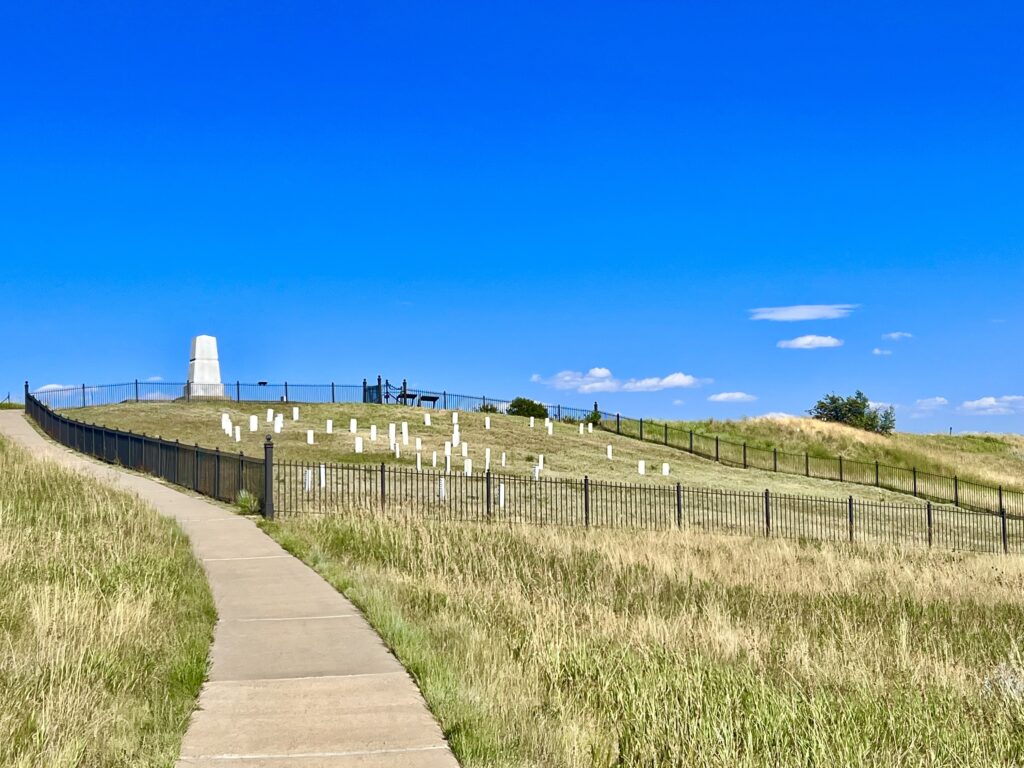
Last Stand Hill, as the site of “Custer’s Last Stand”, is the most well known portion of the Little Bighorn Battlefield. Sitting atop the hill today, is a memorial to the men of the 7th U.S. Cavalry who fell at the Battle of Little Bighorn. The men of the 7th Cavalry were originally buried in shallow graves where they fell. Today they rest in a mass grave beneath the granite memorial. The only exceptions are some of the officers, who were re-interred at locations in the eastern United States. Most notably Colonel Custer was re-interred at West Point. The white marble markers across the battlefield mark where soldiers originally fell, but not their final resting place.
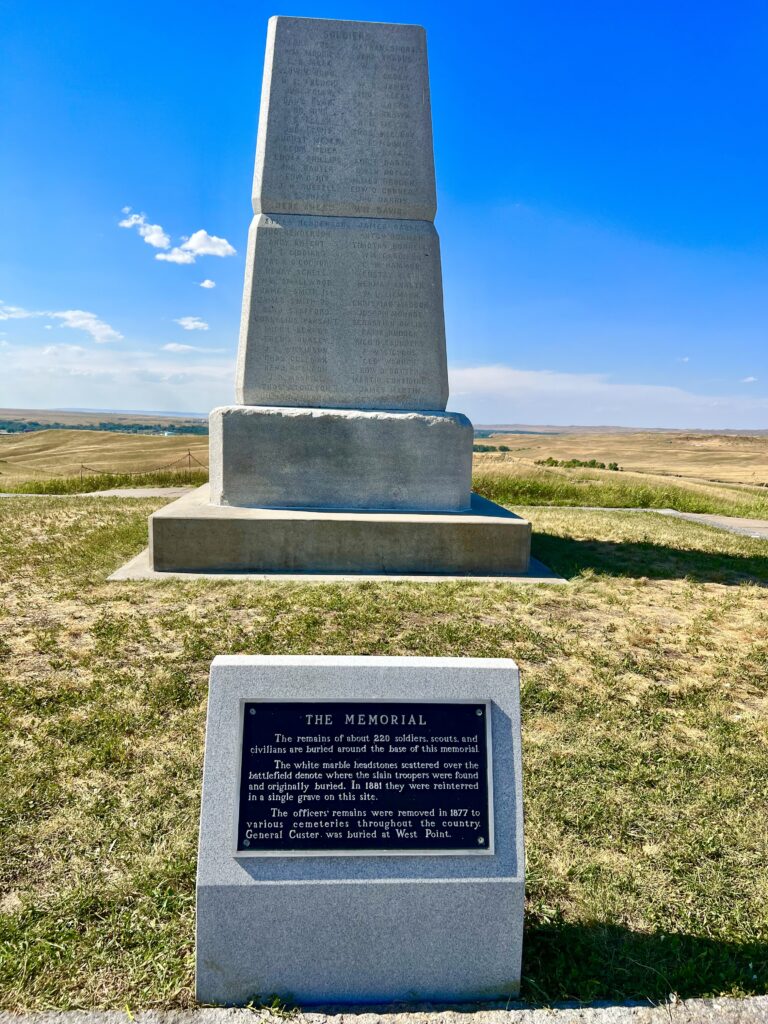
Custer National Cemetery
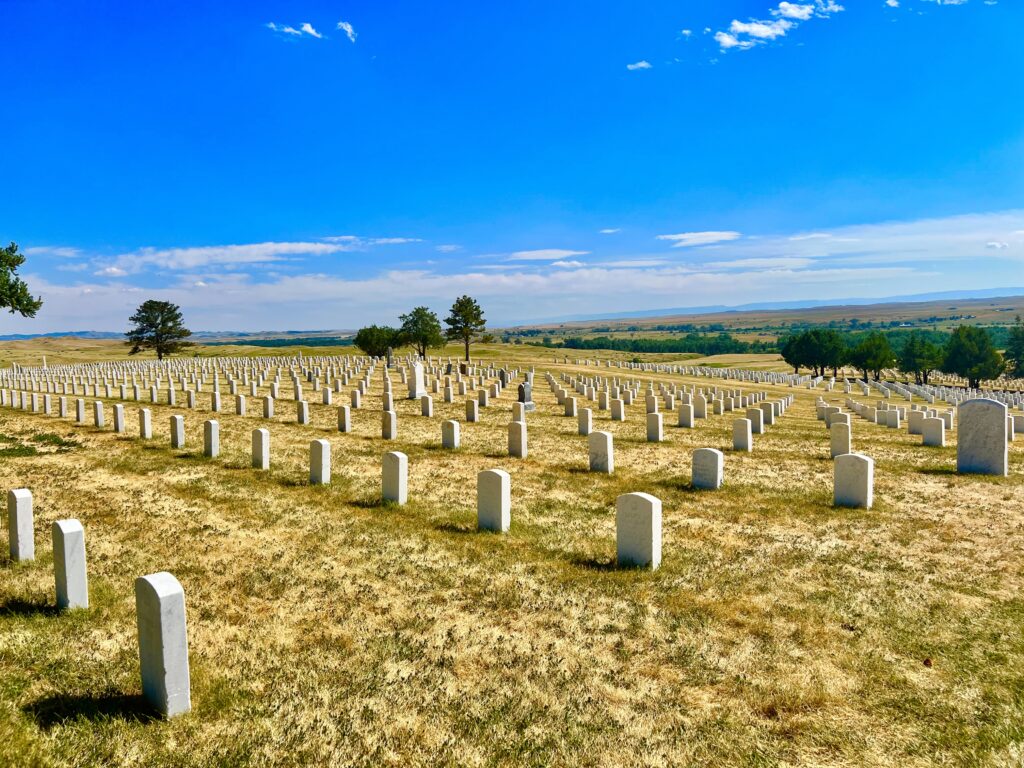
Custer National Cemetery is the final resting place for American soldiers who served in a wide variety of conflicts, ranging from the Indian Wars all the way through Vietnam. After the end of the Indian Wars, remains from 25 different frontier forts were transferred to Custer National Cemetery. Walking through the cemetery you can see the graves of Indian scouts, frontier soldiers, and Medal of Honor recipients. Located not far from Last Stand Hill, a walk through Custer National Cemetery is a must when visiting Little Bighorn Battlefield National Monument.
Reno-Benteen Battlefield
Located 5 miles from Last Stand Hill, the Reno-Benteen Battlefield is where the surviving men of the 7th Cavalry fought until the Native Americans ended their attacks. A lot of people think the entire 7th Cavalry was wiped out at Little Bighorn, but that’s not true. This misunderstanding is a result of the immense focus on Custer, whose forces were completely wiped out with no survivors. On bluffs overlooking the Little Bighorn River, men commanded by Major Marcus Reno and Captain Frederick Benteen setup defensive positions, and ultimately survived the battle.
When it was all said and done there were 355 surviving members of the 7th Cavalry, all of them at this location. The most interesting thing to me was the fact that they didn’t know Custer’s unit had been destroyed. With Last Stand Hill 5 miles away, they didn’t learn Custer’s fate until after the battle was over. They had assumed Custer was similarly situated, so learning what actually happened came as quite a shock to the survivors.
Walking throughout the Reno-Benteen Battlefield, you can still see rifle pits that the men dug in 1876. Since the men at Little Bighorn were all cavalry, they wouldn’t have carried shovels, since they were expecting to fight on horseback. They would have dug these trenches with knives, cups, and their bare hands. Staring down at the trenches, it’s impossible not to imagine what the scene would have looked like in June 1876.
Indian Memorial
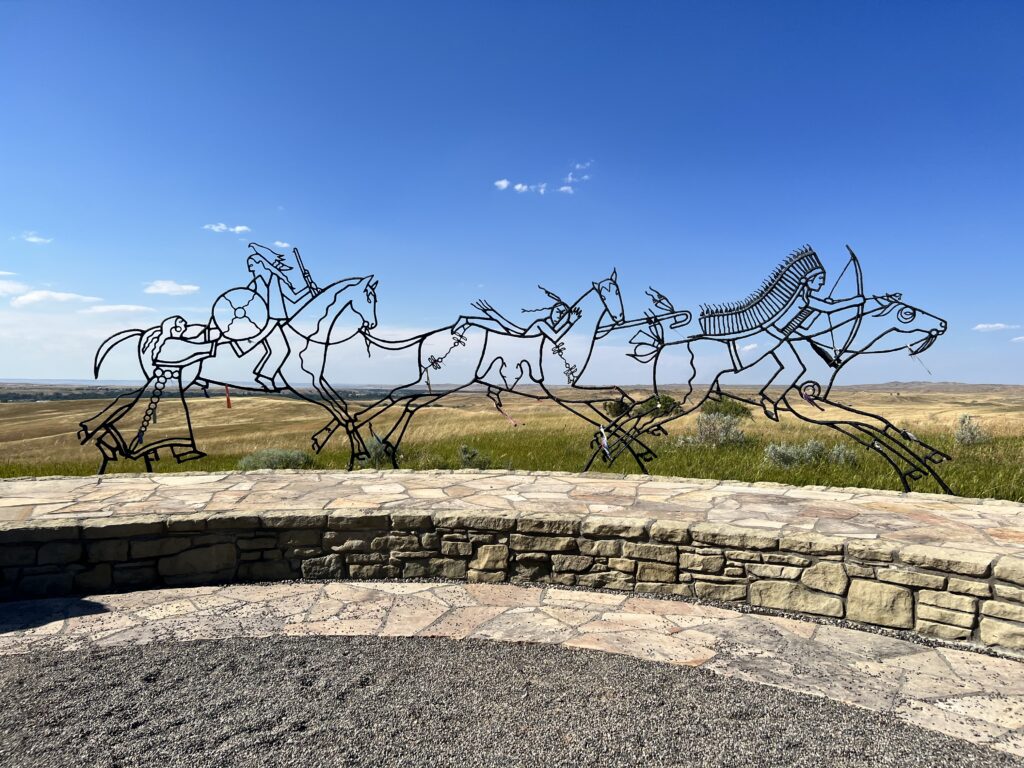
The Indian Memorial was added in 2003, to commemorate the Native American experience at Little Bighorn. The memorial features granite walls, engraved with quotes from Native Americans who fought at the Battle of Little Bighorn.
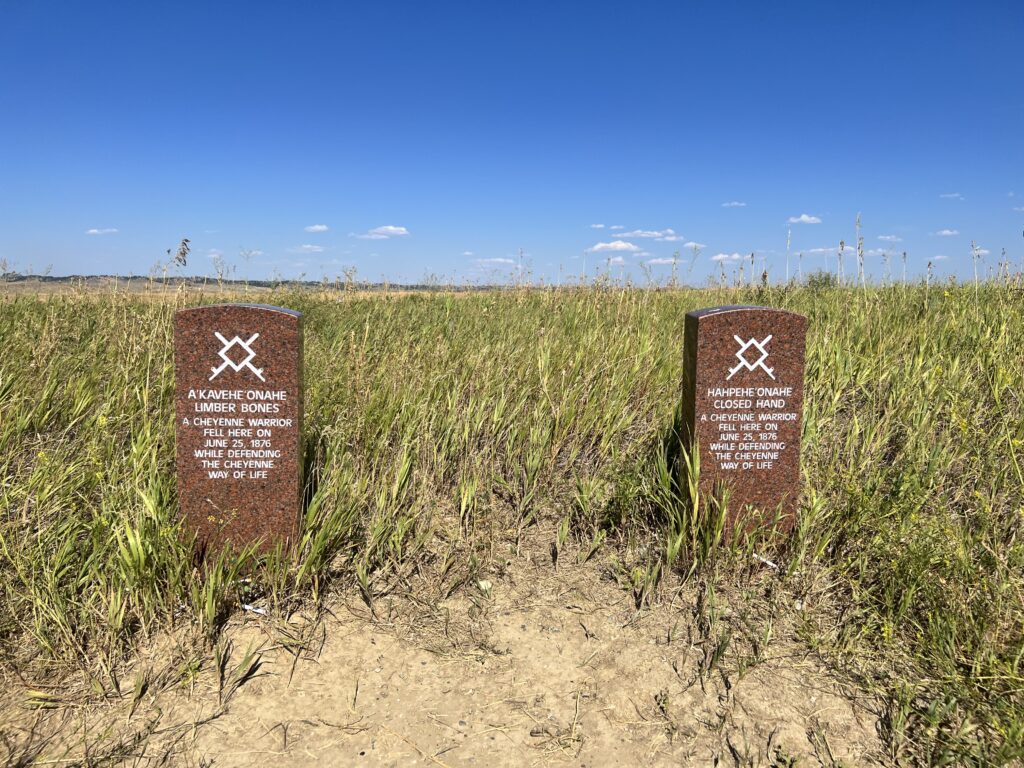
Battle Road
The 4.5 mile long Battle Road connects Last Stand Hill with the Reno-Benteen Battlefield. Along the way there are plenty of turnouts with interesting informational exhibits. The road takes you through the broader battle and the events leading up to “Custer’s Last Stand”. There’s also an audio tour you can easily access with your cell phone. Driving the Battle Road was probably my favorite part, as it gives so much detail about how the Battle of Little Bighorn actually played out.
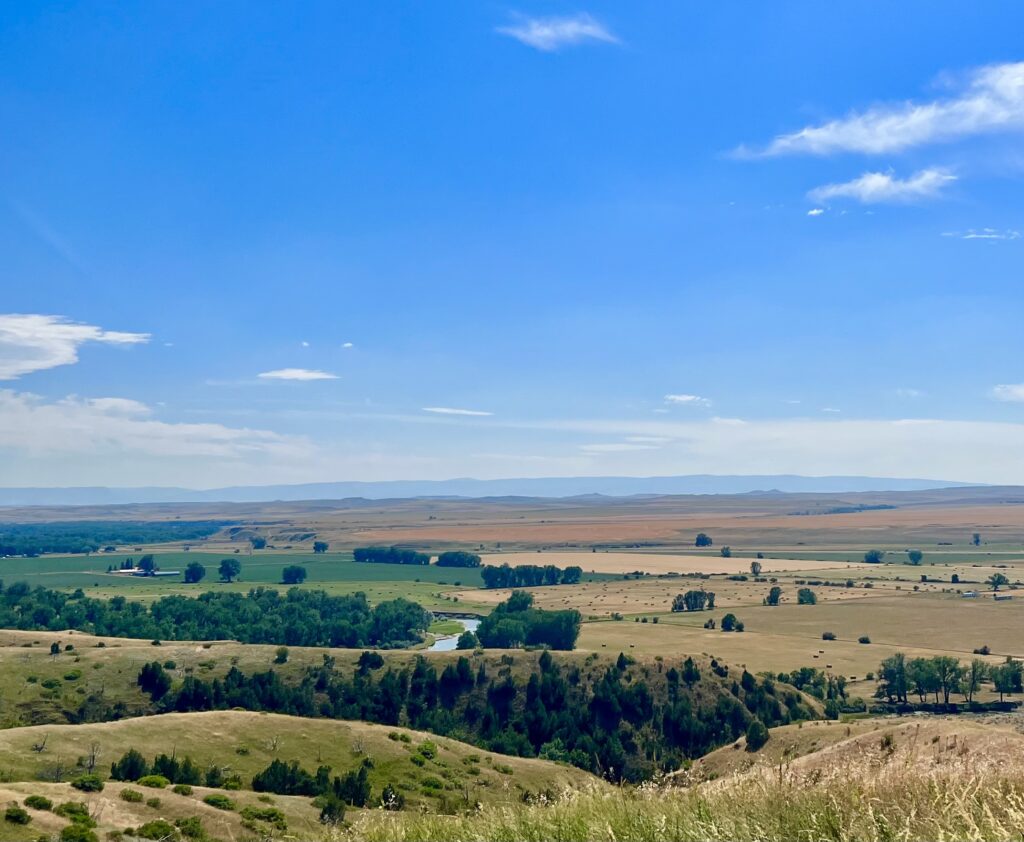
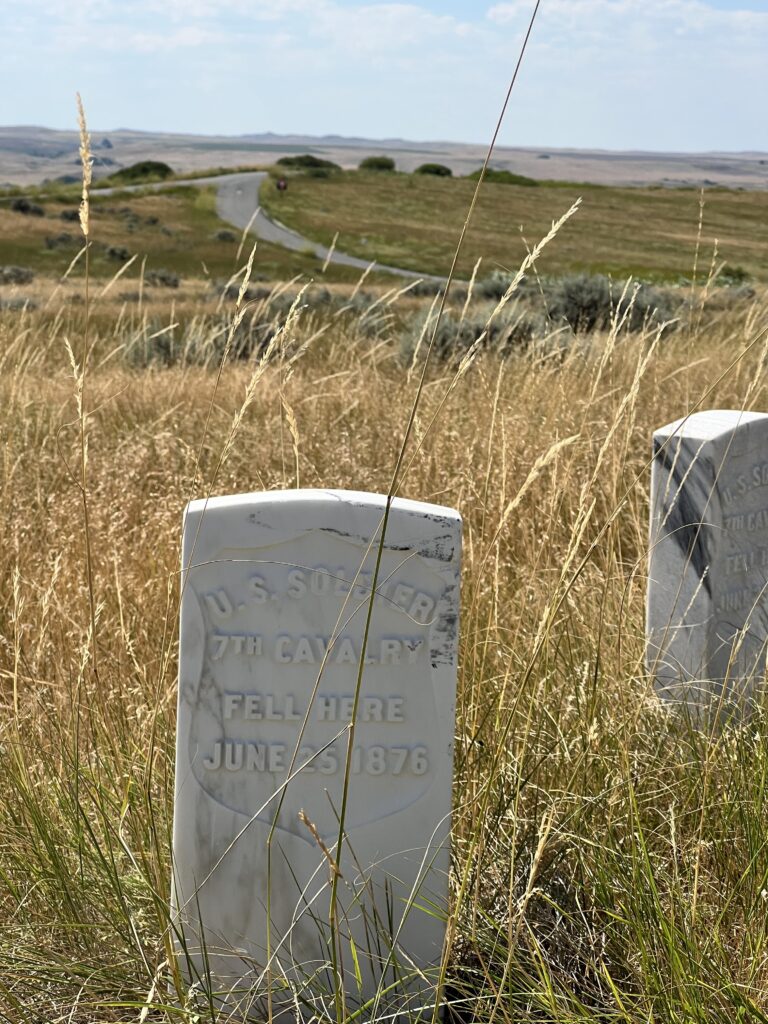
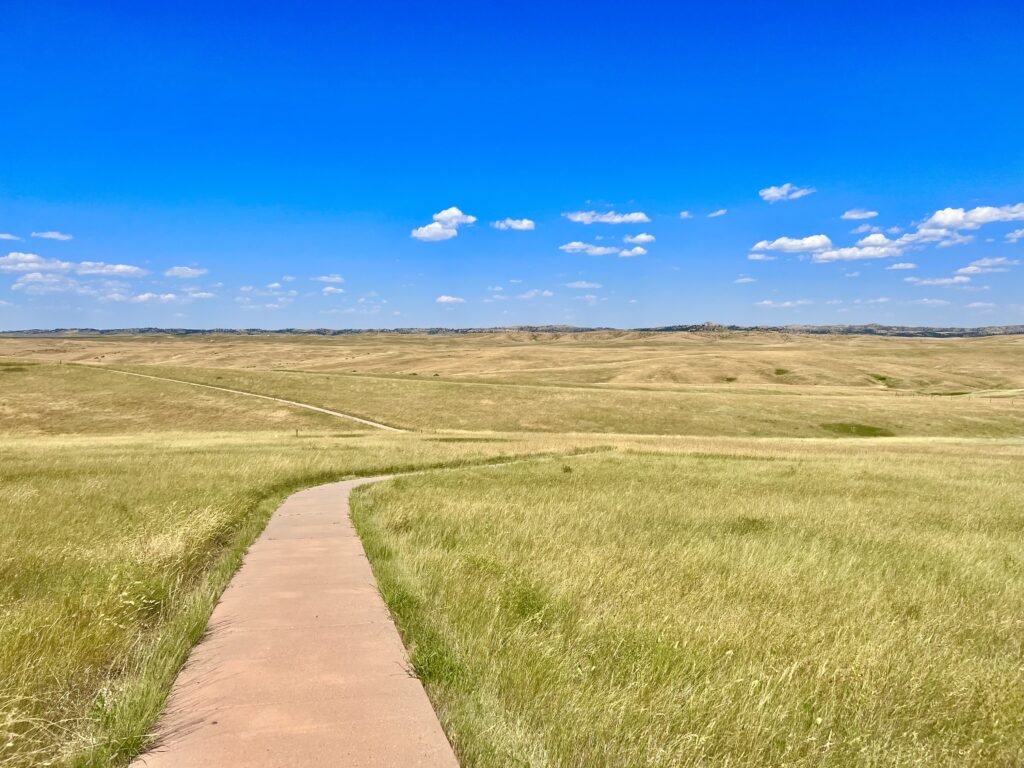

The pictures of all the graves are very moving. 😢
Digging trenches with knives and cups! Yikes!